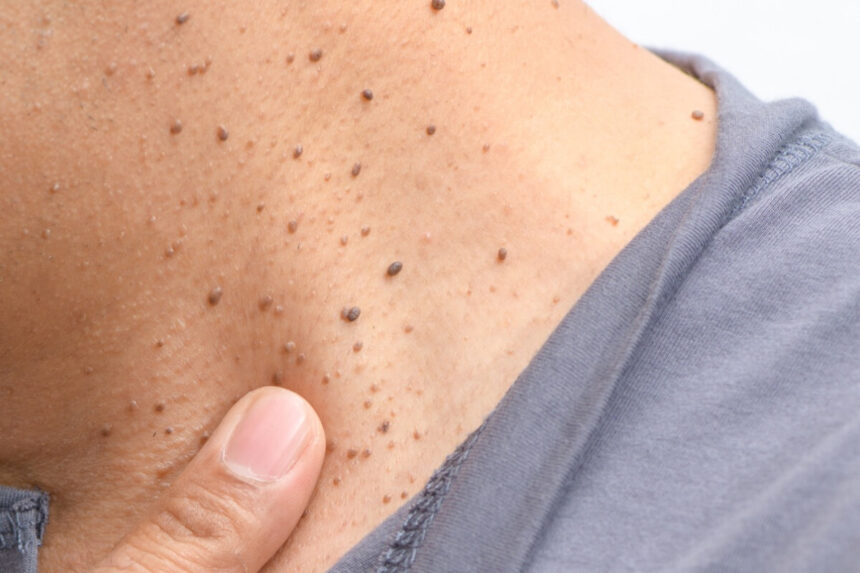Seborrheic keratosis is a common type of noncancerous skin growth that often appears in middle-aged and older adults. These growths have a waxy and slightly raised appearance. They can develop in various areas of the body, including the back, chest, shoulders, and face. While they are benign, their appearance may sometimes cause concern as they may be mistaken for other skin conditions.
What Causes Seborrheic Keratosis?
The precise cause of seborrheic keratosis remains unknown to medical experts. The condition appears to be linked with age, as the growths are more prevalent in older populations and seldom seen in younger individuals. There is also evidence suggesting a genetic component, as these skin growths can be inherited within families. People with a family history of seborrheic keratosis may be more likely to develop them.
Sun exposure might also play a role in their development. The growths sometimes appear more frequently on skin that has been exposed to the sun over many years. Despite their appearance, which can be similar to warts, seborrheic keratoses are not contagious and are not caused by a virus. They do not spread from person to person through contact. Their development is a natural, benign process related to skin aging.
What Are the Symptoms?
Seborrheic keratoses may vary widely in appearance. They can begin as small, rough bumps on the skin. They may grow slowly and develop a waxy or greasy surface over time. The color can range from light tan to dark brown or black. The size of these growths can vary from a small fraction of an inch to more than an inch in diameter. A person may have a single growth or multiple growths scattered across different parts of the body. They are most commonly found on the chest, back, stomach, scalp, face, and neck.
How Is It Treated?
Since seborrheic keratoses are benign and do not pose a health risk, treatment is often not medically necessary. A decision to remove a growth is typically based on cosmetic preference or if the growth becomes a source of discomfort. If a growth bleeds due to irritation from clothing or jewelry, removal may be a suitable option.
Several methods are available for removing seborrheic keratoses. A dermatologist can perform these procedures in an office setting.
- Cryosurgery: This method involves freezing the growth with liquid nitrogen. This is a common and effective procedure for thinner growths.
- Electrosurgery and Curettage: In this two-step process, the growth is first numbed. Then, an electric current is used to cauterize the growth, and an instrument is used to scrape it off the skin’s surface.
- Shaving: This technique shaves off the growth from the skin’s surface. It can be useful for growths in cosmetically sensitive areas.
The choice of treatment depends on the size, thickness, and location of the growth, as well as patient preference and the physician’s expertise.
Meet With a Dermatologist
Consulting with a board-certified dermatologist is recommended for a definitive diagnosis and to discuss any concerns. A dermatologist can distinguish seborrheic keratosis from other skin conditions through a visual examination. A skin biopsy may be performed to rule out skin cancer, particularly if a growth has an unusual appearance or changes rapidly. A dermatologist can offer personalized advice and, if desired, perform a safe and effective removal procedure tailored to your specific situation.





